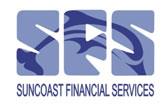“Investors in Australia are moving towards higher yielding investments such as commercial real estate because of historically low interest rates”, says Michael Kingcott, AMP Capital’s head of property investment strategy and research. 
In fact, in 2014/15 commercial property investment in Australia soared to a record high of $28.88 billion1 ─ a 19% increase on 2013/14.
So is commercial property an asset class you should consider investing in? Let’s have a look at some key considerations.
Types of commercial property
The types of commercial properties include retail (shopping centres, high street shops, retail warehouses and convenience stores), industrial warehouses and showrooms, office space, medical centres and leisure facilities like cafes, restaurants and gyms.
Ways to invest
You can invest in commercial real estate on your own, through pooled funds, through an SMSF, as part of a syndicate or through a company. If you invest in commercial property through a SMSF, ensure you’re across the important rules that apply.
Things to consider
1. Return on investment
Kingcott says, “Typically there are long cycles between downturns with commercial property investment”.
Commercial property corrections have historically been from an oversupply of new buildings, economic recessions, or excessive use of debt, as was the case during the 2008 global financial crisis”.
He also mentions, “Historically around 75% of the return on the investment has been generated from the yield, rather than from capital gain”.
The yield is a measure of future income on the property and is generally calculated annually as a percentage, based on the property’s cost or market value.
2. Length of leases
Major tenants in shopping malls typically have the longest leases, some up to 15-20 years in length. Some older buildings or those in suburban locations can have short-termer leases (12 months) because there is less demand for businesses to rent these types of premises. Better quality buildings such as CBD office towers and newer industrial warehouses have tenants leased on longer terms in comparison.
3. Rents can offset the effects of inflation
Kingcott also tells us, “Commercial leases typically incorporate annual, fixed, or market reviews throughout the term of the lease, meaning the rent has the potential to rise, helping to offset the effects of inflation over time.”
4. Entry, transaction costs and GST
Buying a good piece of commercial real estate generally involves a sizeable initial outlay of money.
A GST component may be included in the purchase price and this may or may not be recoverable depending upon individual circumstances. Purchases are also subject to stamp duty, which is typically 5.5% of the (GST-inclusive) purchase price.
There is other due diligence to be done before purchase to check things such as structural integrity, legality of leases, and site contamination, so costs can run up quickly.
It is important to seek tax advice before going ahead with a purchase.
5. Maintenance costs
Repairs and maintenance are very important as a commercial property is a place for business use, so the standard of the building needs to be high to attract customers. They must also comply with fire safety, occupational health and safety and disability access regulations and standards. Other costs may include insurance and cleaning.
6. Transparency
Kingcott says, “Commercial property is not traded on a daily basis like shares, hence there isn’t the 24/7 information flow that’s available with the share market. Market statistics are generally published on a monthly or quarterly basis, rather than a daily basis like in the share market.
7. Ability to sell
Commercial property can suffer at points in time where there are fewer buyers, and this can have an impact on the sale price.
Is commercial property for you?
Commercial property is yet another asset class that can be used to diversify risk in your portfolio. On the risk/return spectrum, the asset class sits between bonds and shares, with income being more secure, but with less capital growth potential.
Typically large investors, such as super funds, like commercial property for its stability within an investment portfolio, long cycles, and higher yields. But there are a number of risks to consider, including entry and ongoing costs, tax complexities, the ability to sell and rent the property out.
You’ll need to think about:
-
What you want to achieve from your investment, including your short and long term financial goals
-
The importance of diversifying your investments
-
Your personal circumstances and the risks you’re willing to take
-
Contact us on 07 5443 8312 to help you through the legal, tax and other implications of buying an investment property.
Source : AMP March 30th 2016
